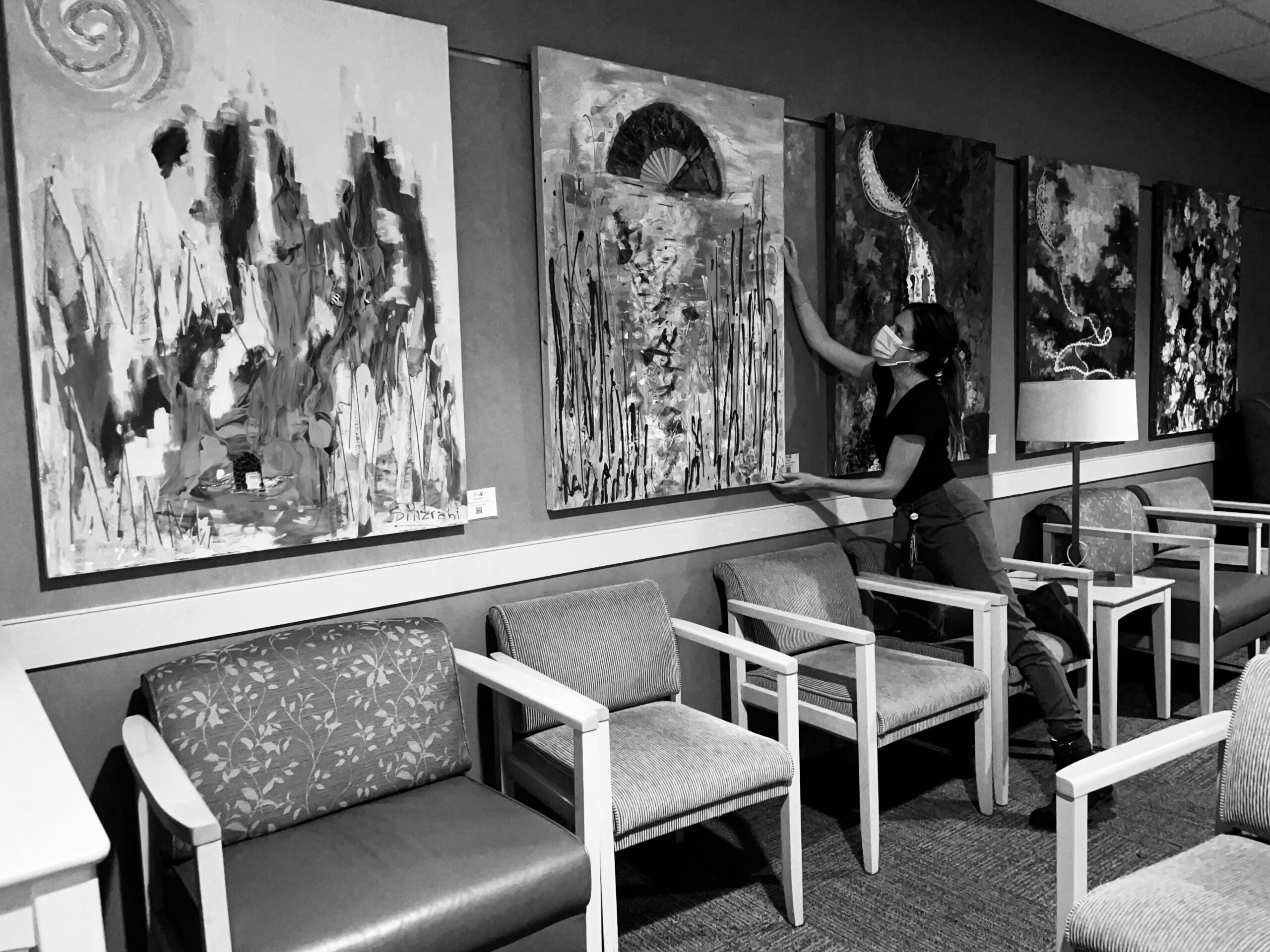Dalilah's Dream
In “Dalilah’s dream” we can see a myriad of colors merging with textiles. The artist included stitching, ribbons and more. To create these panoramas, Silvina includes a variety of colors that enhance the nature of her images. Her daughter’s dreams and memories – of her life and relationships – appear as windows and portals to her dreams. Her love, and especially unique relationship with Dalilah, her daughter, transports her to a simpler world. Silvina expresses: “My daughter, Dalilah has always been a source of inspiration. From the moment she was born, I enjoyed seeing her laugh tell me about her dreams, talk about colors and her way of seeing the world. These paintings are part of the journey that traveling together as mother and daughter.” Silvina calls her daughter “my miracle”. This is because she had many years of infertility, but once she was able to get pregnant, she had Dalilah. Dalilah is now in college. Furthermore, this artwork represents a dream her daughter had and shared with her.
Hear from the artist herself:
En “El sueño de Dalila” podemos ver un sinfín de colores fusionándose con los textiles. El artista incluyó costuras, cintas y más. Para crear estos panoramas, Silvina incluye una variedad de colores que realzan la naturaleza de sus imágenes. Los sueños y recuerdos de su hija, de su vida y relaciones, aparecen como ventanas y portales a sus sueños. Su amor, y sobre todo su singular relación con Dalilah, su hija, la transporta a un mundo más sencillo. Silvina expresa: “Hija mía, Dalilah siempre ha sido una fuente de inspiración. Desde el momento en que nació, disfruté verla reír, contarme sus sueños, hablar sobre los colores y su forma de ver el mundo. Estas pinturas son parte del viaje que recorren juntas como madre e hija”. Silvina llama a su hija “mi milagro”. Esto se debe a que tuvo muchos años de infertilidad, pero una vez que pudo quedar embarazada, tuvo a Dalilah. Dalilah ahora está en la universidad. Además, esta obra de arte representa un sueño que su hija tuvo y compartió con ella.
Escuchar de la propia artista:

Silvina Mizrahi, Dalalih's Dream, 2019. Mixed media on canvas, 30"x40" ©Silvina Mizrahi. All rights reserved.
This exhibit is an opportunity to acknowledge the themes of infertility and family planning and support in the Latino community. Also to acknowledge the college education amongst Hispanics. With this piece, we want to provide insight into the experience of low-income immigrant Latino couples seeking infertility treatment. A study done in 2019 proved that there are many challenges to providing infertility services to a low-income immigrant Latino population. Challenges related to communication, availability, and affordability impeded the delivery of optimal infertility care. We recommend and will vouch for greater availability of translators and both patient and physician cultural orientations to address these health care barriers. Family planning and support in Latino communities needs addressing in order to provide and encourage Hispanic women to seek professional help.
We need to increase the education and English proficiency of Latinos in order to fully realize their potential. Since they are less likely to have a college degree, many Latinos are not well-prepared to take advantage of these job openings in high-skill areas. Only 19 % of working-age Latinos have a Bachelor’s degree or higher compared to 50 % of non-Latinos.
Esta exhibición es una oportunidad para reconocer los temas de infertilidad y planificación familiar y apoyo en la comunidad latina. También para reconocer la educación universitaria entre los hispanos. Con este artículo, queremos dar una idea de la experiencia de las parejas latinas inmigrantes de bajos ingresos que buscan tratamiento para la infertilidad. Un estudio realizado en 2019 demostró que existen muchos desafíos para brindar servicios de infertilidad a una población latina inmigrante de bajos ingresos. Los desafíos relacionados con la comunicación, la disponibilidad y la asequibilidad impidieron la prestación de una atención óptima para la infertilidad. Recomendamos y garantizaremos una mayor disponibilidad de traductores y orientaciones culturales de pacientes y médicos para abordar estas barreras de atención médica. Es necesario abordar la planificación familiar y el apoyo en las comunidades latinas para brindar y alentar a las mujeres hispanas a buscar ayuda profesional.
Necesitamos aumentar la educación y el dominio del inglés de los latinos para poder desarrollar plenamente su potencial. Dado que es menos probable que tengan un título universitario, muchos latinos no están bien preparados para aprovechar estas ofertas de trabajo en áreas altamente calificadas. Solo el 19 % de los latinos en edad de trabajar tienen una licenciatura o un título superior en comparación con el 50 % de los no latinos.





